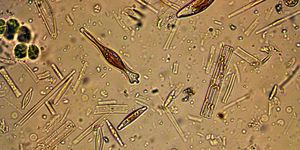It's estimated that about 18 million people around the world have rheumatoid arthritis (RA), an autoimmune condition in which joints can be inflamed, swollen, and painful. These problems can eventually lead to permanent disability. There are several treatments for RA that can alleviate symptoms for some patients, but these therapeutics don't work for every RA patient, and we need more information to develop effective drugs that can help everyone. New research has aimed to reveal more about this complex disease with a single cell dissection of the disorder. In a new study reported in Nature, scientists have found six distinct subtypes of inflammation that occur in RA.

"In the treatment of individuals with rheumatoid arthritis, we struggle to find the right treatment for the right patient," said corresponding study author Soumya Raychaudhuri, MD, PhD, of Brigham and Women's Hospital and the Broad Institute of MIT and Harvard.
In this study, the researchers defined the subtypes of inflammation using results from many approaches, combining them in a novel way for the study of an inflammatory disease, noted Raychaudhuri.
In this work, the investigators assessed samples of synovial tissue, which normally cushions and protects joints but is often inflamed in RA, from 79 donors. These included samples from people who were newly diagnosed, and individuals who did not respond to treatment.
Both bulk and single-cell RNA sequencing was used to identify the active genes in these synovial tissue samples. More than 314,000 cells were analyzed to reveal six major types of inflammation, which were distinguished by affected cell types, so-called cell-type abundance phenotypes (CTAPs).
The researchers were not surprised by some of the CTAP groups, like those that were linked to T or B cells. But other cell types like fibroblasts and endothelial cells were unexpectedly revealed. CTAPs in individual patients were also found to be variable, and could change in response to treatment.
Now the researchers want to know more about the cell types that are related to RA by studying the relationships among cells, and how they are connected to disease. They are also hopeful that more patient synovial tissue will be analyzed, which is not usually done. Blood tests are a more common way to assess RA patients, and this study has suggested that the cellular profile illuminated by synovial tissue is significantly different from the information provided by RA patient blood samples.
"What this study shows is that the tissue matters," said co-senior study author Michael Brenner, MD, of the Brigham's Division of Rheumatology, Inflammation and Immunity.
Synovial tissue biopsies can help reveal the details of RA pathology, which can differ considerably between patients; tissue assessments should be performed during clinical trials, said Brenner. "By providing this atlas of cell types and pathways involved in RA, we are better able to pursue our precision medicine goal of being able to select the right drug for the right patient and achieve a high response rate."
Sources: Brigham and Women's Hospital, Nature

